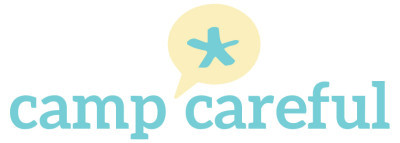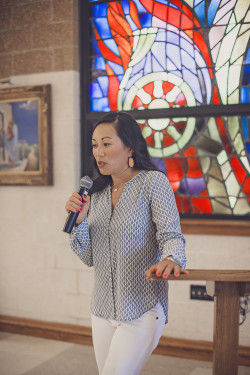I Believe You
It’s been 5 months since I started my Camp Careful website and blog. My hope is that you have learned some facts about child sexual abuse, and more importantly, used the information from my blog or class to help prevent abuse from happening to your child.
There are so many things we can all do to help protect our children. My blog has discussed a few of these already:
- Learn the statistics/facts. 1 in 10 children are sexually abused before they turn 18.1 I put this fact out there often because I want all parents to know the scope of the problem. Roughly two children in your child’s class will become a victim of child sexual abuse before they become an adult. Child sexual abuse knows no boundaries. Social, economic, and racial lines do not exist. Trust me when I tell you there are children in your child’s own school who have been sexually abused and needed my services at the local Advocacy Center. Private school, public school, rich school, poor school—makes no difference. I say this because I want parents to avoid the “it won’t happen to us” mentality. It happens, period. Also remember over 90% of sexually abused children are abused by someone they know2. 30% of sexually abused children are abused by a family member2. For more statistics, check out my website campcareful.com.
- Talk to your children. My Camp Careful talks have always focused on this aspect of child sexual abuse prevention. My blog post The Subway Guy, the political activist, and home-schooling touched on this important topic. Learn to talk to your children openly and frequently about their private parts and personal boundaries. If you have open lines of communication about private parts, your child will feel that protective bond you’ve created and will be more likely to come to you if there is a problem or abuse situation. Talking to your child will actually make them less vulnerable to abuse. Perpetrators, for obvious reasons, tend to avoid children who will speak out against abuse. I recommend attending Camp Careful once a year because kids learn and remember new things from the class each year. Parents also pick up on new tips as their child’s physical and social interactions change with age. Sign up for new Camp Careful classes with this link.
- Limit the abuse opportunities. I wrote the blog post Two’s company, three’s a crowd? to talk about how to limit the number of opportunities a molester or perpetrator has access to your child in a private setting. This blog gives practical tips on how to prevent child sexual abuse by avoiding potentially uncomfortable situations with adults and peers.
Today, I want to touch briefly on what to do if a child discloses abuse to you. I’ve been at my new job as the Child Sexual Abuse Examiner at the Advocacy Center officially for 6 weeks now and in training for the past year. Already I can see the patterns that occur in child sexual abuse disclosures: delayed outcry, adult disbelief, child-blaming, and silencing. Approximately 75% of child sexual abuse victims wait at least a year before telling anyone3. ONE YEAR. Research also shows that 62% of child sexual abuse victims end up NEVER telling4. Sadly, that means many of these children are victims of chronic and repetitive sexual abuse. I have seen children who have been victims of sexual abuse for several years before telling anyone. When children finally disclose, 40% will tell a close friend4. Many others will tell a teacher or school counselor. I have seen several children who have disclosed sexual abuse to parents only to be told “don’t let that happen again” (as if the child made the choice and had control over the situation) or “don’t tell anybody about that.” You can see how this reaction from a parent can lead to feelings of shame and guilt in the child. Imagine that child being abused again. Do you think he or she will tell an adult the next time? Hard to believe he or she would.
So what should you do when a child discloses sexual abuse? Here are the things to remember:
- Tell the child “I believe you.” Don’t act shocked or surprised. Don’t overreact. A child’s disclosure that is met with belief and support gives that child a huge sense of relief and hope. The moment you say “I believe you” is the moment the child realizes they can trust you to protect them and fight for them.
- Tell the child it’s not his/her fault. Statements such as “don’t let it happen again” or “why were you in the room anyway?” will make the child feel like he/she is to blame.
- Find out the basic facts of who, what, when, and where. Don’t ask too many questions. Only ask open-ended, non-leading questions like “what happened next?” There are forensic interviewers whose job it is to get the details. Don’t confuse the child or compromise a potential criminal prosecution by getting too much information.
- Praise the child for coming forward and being so brave.
- Tell the child you will get help and do everything you can to protect them.
- Don’t promise that you won’t tell anyone! Because the next step is…
- Report to law enforcement and/or child protective services.
If you are in a field where you come in contact with children (teachers, counselors, therapists, medical field, church staff/clergy, etc.), I urge you to get training on child sexual abuse prevention and awareness. The Darkness to Light website is an excellent website with great facts, tips, and handouts. www.d2l.org They have an online training course for child sexual abuse prevention called Stewards of Children. I highly recommend it for anyone working around children. The online course is only $10 and takes 2 hours. Great information for parents too!
I just discovered the Darkness to Light website two years ago and found that most of the information coincides with my Camp Careful topics. In fact, all child sexual abuse prevention websites focus on the same things: learn facts, teach your child about private parts, talk to your child about keeping their body safe, talk about stranger danger, keep your kids away from potential abuse situations, recognize abuse signs, and do the right things when abuse is disclosed.
I have many other topics to discuss in the future, including grooming techniques of molesters, signs & symptoms of child sexual abuse, why children don’t tell, how children do tell when they finally get the chance/courage. What other topics do you want to hear in future blog posts? Topics can include child sexual abuse or other general pediatric and child safety issues. Please share your thoughts in the comment section.
Sign up for upcoming Camp Careful classes in February by clicking here. I have had requests to travel for Camp Careful, and I would love to do that if my schedule allows. I also do school assembly presentations for grades pre-K through 8th grade. Please contact me on my website if you are interested.
Thank you, and as always, empower your kids and stay safe!
Soo Battle, M.D., F.A.A.P.
Disclaimer: The information contained on this website/blog is for informational purposes only and should not be used to replace the relationship that exists between you and your pediatrician or doctor. Please contact your doctor for medical advice and/or treatment recommendations specific to your child.
References:
- Townsend, C., & Rheingold, A.A., (2013). Estimating a child sexual abuse prevalence rate for practitioners: studies. Charleston, S.C., Darkness to Light. Retrieved from www.D2L.org.
- Finkelhor, D. (2012). Characteristics of crimes against juveniles. Durham, NH: Crimes against Children Research Center.
- Darkness to Light statistics. www.d2l.org
- London, K., Bruck, M., Ceci, S., & Shuman, D. (2003) Disclosure of child sexual abuse: What does the research tell us about the ways that children tell? Psychology, Public Policy, and Law, 11(1), 194-226.

